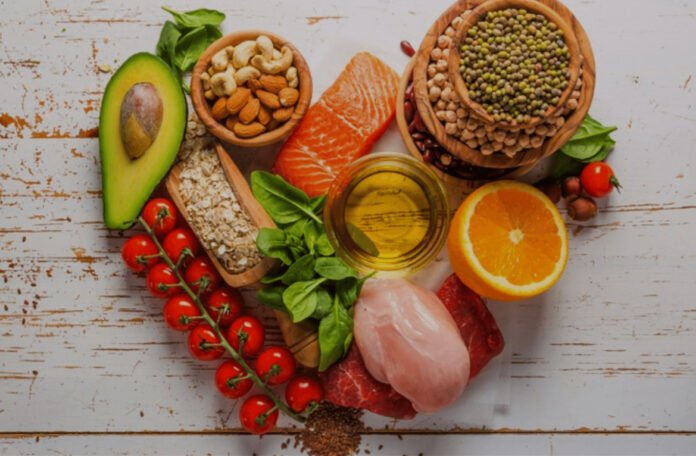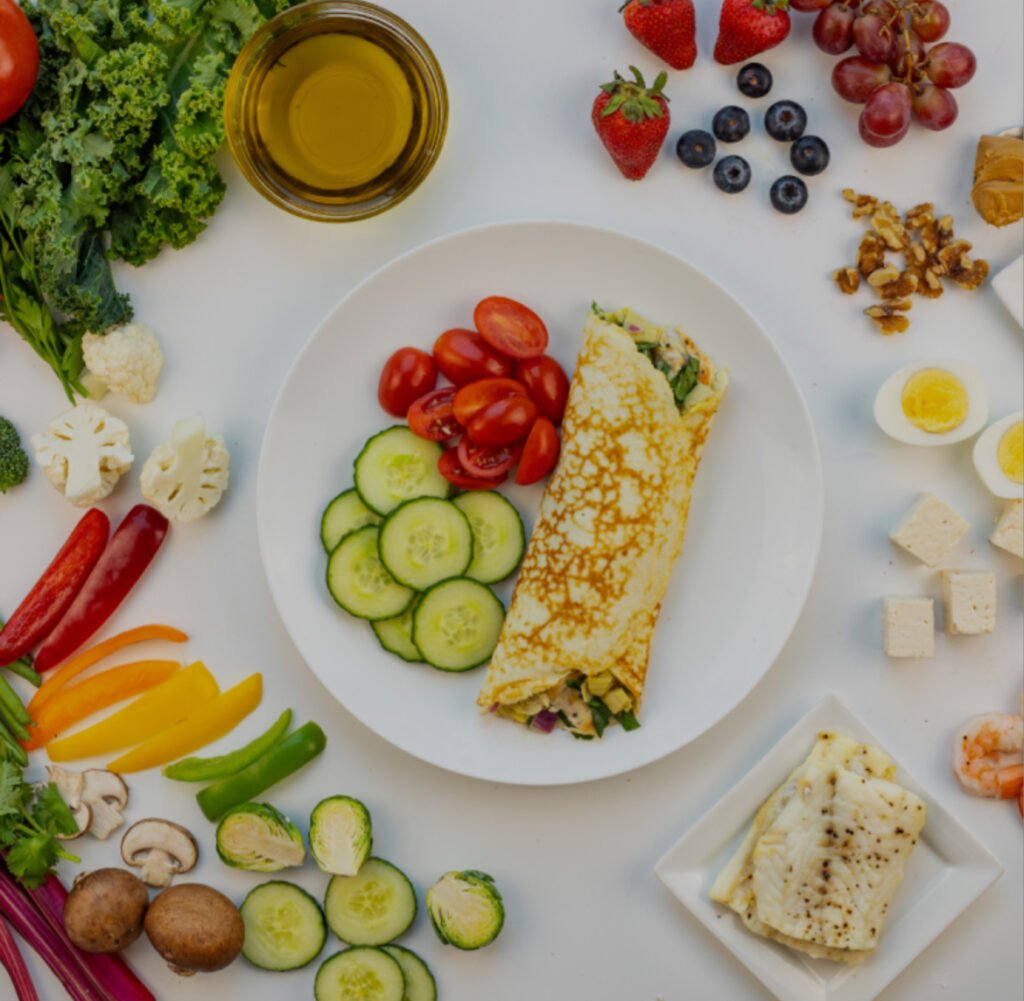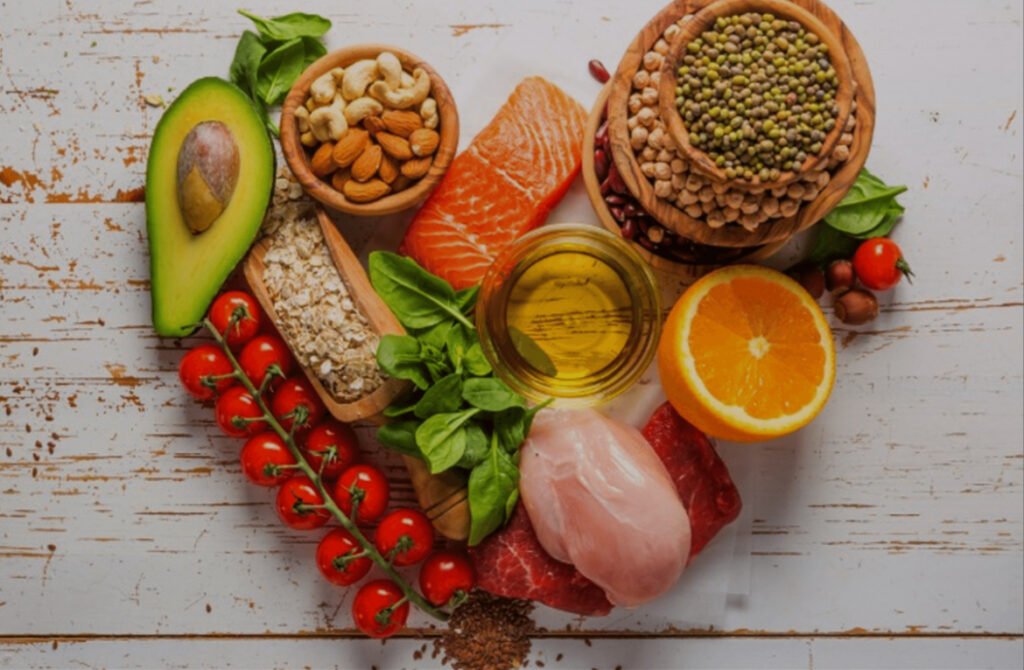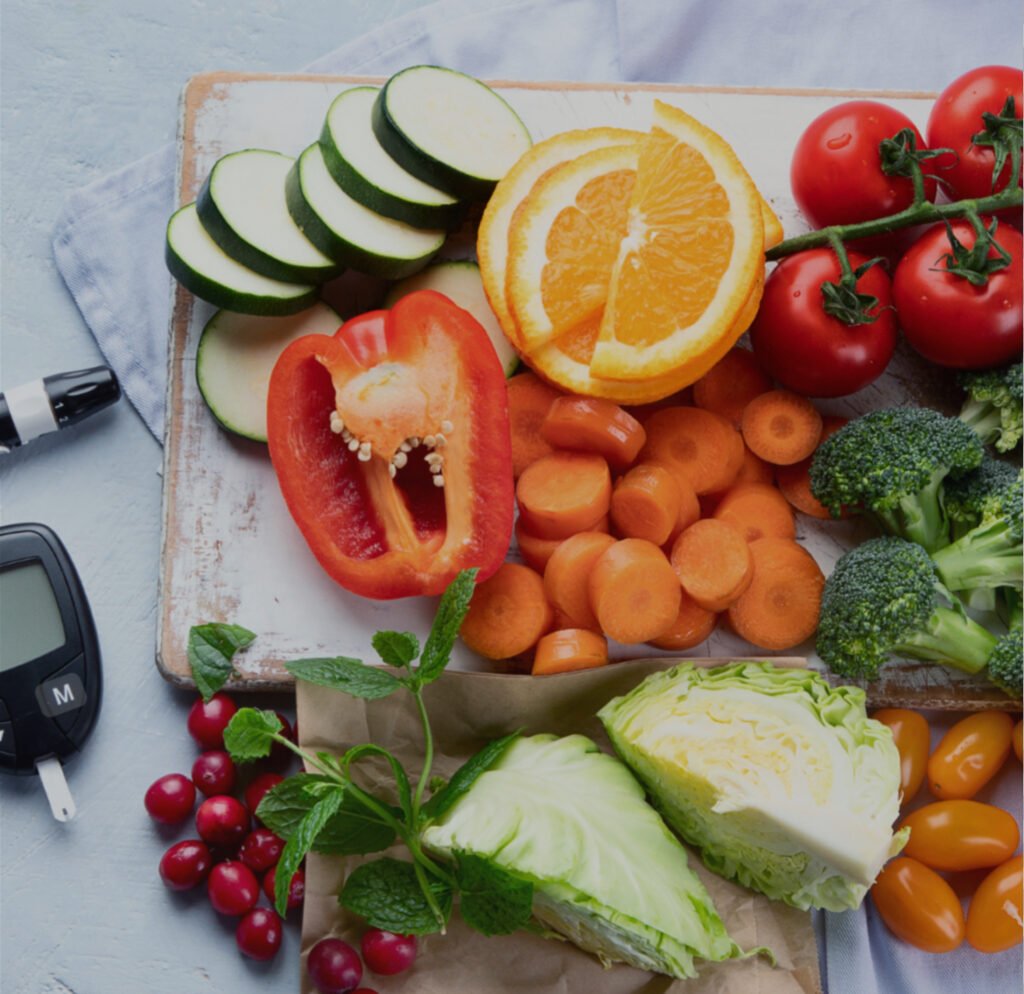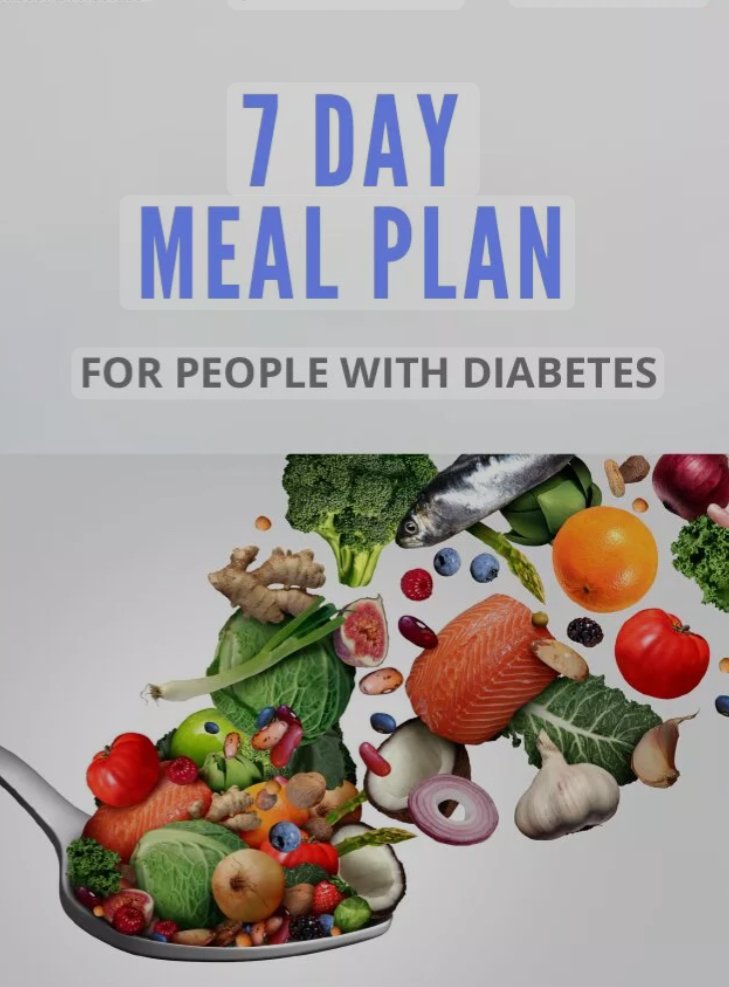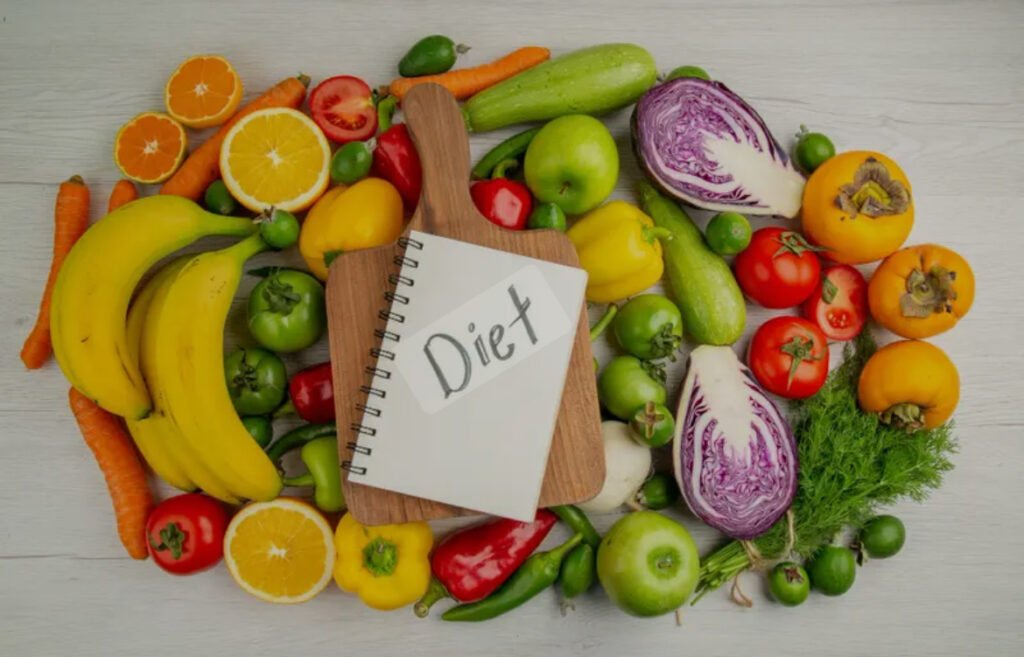Introduction: Why Blood Sugar Control Starts with the Right Meal Plan
When it comes to managing diabetes, food isn’t the enemy—it’s the tool. A strategic and enjoyable diabetes diet can be your strongest ally in achieving long-term blood sugar control and living a healthier life. Forget the myths about bland meals or eliminating all carbs; managing diabetes is all about balance, consistency, and knowledge.
This comprehensive guide will walk you through:
- The science behind diabetes and diet
- What foods to eat and avoid
- A 7-day diabetes-friendly meal plan
- Snack ideas, grocery lists, and more
Let’s build your perfect plate—starting now.
1. Understanding the Link Between Diabetes and Diet
Diabetes is a condition where your body either doesn’t produce enough insulin or can’t use it effectively. This leads to elevated blood glucose levels, which, over time, can damage your organs.
The food you eat has a direct impact on your blood sugar. Carbohydrates, in particular, turn into sugar in your bloodstream. That’s why creating a thoughtful meal plan is essential for keeping those levels in check.
Key terms:
- Glycemic Index (GI): Measures how quickly a food raises blood sugar.
- Glycemic Load (GL): Takes into account portion size and carb type.
- Insulin sensitivity: Improved with proper nutrition and exercise.
By focusing on low-GI foods, fiber-rich carbs, lean proteins, and healthy fats, you can gain control of your condition—and even reduce your medication needs.
2. The Core Principles of a Diabetes Diet.
Creating a powerful diabetes diet isn’t about strict limitations or cutting out entire food groups. It’s about learning how different nutrients affect your body—especially your blood sugar levels—and using that knowledge to make smart, sustainable choices.
Let’s break down the 5 essential principles behind a diabetes-friendly eating plan that promotes long-term blood sugar control, without sacrificing enjoyment or flavor
1. Balance Is Your Best Friend
The most effective way to regulate blood sugar is to balance each meal with a combination of the three macronutrients:
- Carbohydrates (carbs): Your body’s main energy source—but the type matters. Choose complex carbs like whole grains, legumes, and vegetables that digest slowly and have a lower glycemic impact.
- Protein: Helps stabilize your energy and keeps you full. Think lean meats, tofu, eggs, Greek yogurt, and legumes.
- Fats: Don’t fear fat! Healthy fats like avocado, nuts, and olive oil can help slow down digestion and prevent blood sugar spikes.
Balanced meals = sustained energy + fewer sugar crashes.
2. Carbohydrate Awareness Is Key
Carbs aren’t evil, but carb management is essential for people with diabetes. Why? Because carbs directly affect blood sugar levels more than any other nutrient.
There are three types of carbs:
- Simple carbs (sugar, white bread): Digest quickly and cause spikes.
- Complex carbs (whole grains, vegetables): Digest slowly and support better control.
- Fiber-rich carbs (beans, berries, chia seeds): Improve digestion, help you feel full, and blunt blood sugar spikes.
Pro tip: Aim for 30–60g of total carbohydrates per meal depending on your calorie needs and doctor’s advice. Use carb-counting apps or labels to stay on track.
3. Timing Matters Just as Much as Content
Eating at regular times throughout the day can:
- Prevent dangerous blood sugar drops (hypoglycemia)
- Avoid post-meal spikes (hyperglycemia)
- Keep your metabolism steady
Try to space meals about 4–5 hours apart, and don’t skip meals, especially breakfast. Skipping meals can cause blood sugar to swing unpredictably, leading to energy crashes or overeating later.
Add snacks between meals if there’s a longer gap or if you feel low energy.
4. Glycemic Index (GI) and Glycemic Load (GL) Should Guide Your Choices
The Glycemic Index ranks foods from 0 to 100 based on how quickly they raise your blood sugar. The lower the GI, the slower the sugar enters your bloodstream.
Examples of low-GI foods (ideal for a diabetes diet):
- Steel-cut oats
- Lentils
- Sweet potatoes
- Non-starchy vegetables
- Most fruits (especially berries, apples, and citrus)
But GI isn’t everything. Glycemic Load (GL) factors in portion size—which makes it more practical. For example:
- Watermelon has a high GI but a low GL (because you don’t usually eat a large amount at once)
- Rice has a high GI and moderate-to-high GL (portion control is key)
Bottom line: Choose low-to-medium GI foods, but also watch how much of them you eat.
5. Limit Processed Foods and Hidden Sugars
Many processed foods—especially “low-fat” or “sugar-free” options—contain hidden carbs and added sugars that spike blood sugar quickly.
Watch out for:
- “Sugar-free” drinks with maltodextrin or sorbitol
- Breakfast cereals labeled as “healthy”
- Store-bought sauces, dressings, and ketchup
- Pre-packaged snacks and energy bars
Reading labels becomes a superpower when you’re managing diabetes. Look for:
- Total Carbohydrates
- Dietary Fiber
- Added Sugars
A good rule of thumb: The shorter the ingredient list, the better.
Bonus Principle: Food Is More Than Numbers
Yes, macros and numbers matter—but food is also cultural, emotional, and personal. The best diabetes meal plan is one that:
- Respects your cultural and taste preferences
- Is realistic and repeatable
- Feels satisfying—not restrictive
If a diet feels like punishment, it won’t last. But if it makes you feel energized, nourished, and empowered, that’s a lifestyle change—and that’s what we’re after.
3. Foods to Embrace and Avoid for Blood Sugar Control
Let’s break it down clearly.
✅ Best Foods for a Diabetes Diet:
- Whole grains (bulgur, farro, steel-cut oats)
- Leafy greens and cruciferous veggies
- Berries (low in sugar, high in fiber)
- Greek yogurt (unsweetened)
- Fatty fish (salmon, sardines)
- Legumes (lentils, black beans)
❌ Foods to Limit or Avoid:
- Refined sugars (cakes, cookies, soda)
- White bread, white rice, and pasta
- Full-fat dairy with added sugars
- Fried foods and processed meats
- Sweetened beverages (energy drinks, iced teas)
Pro tip: Always read labels—hidden sugars are everywhere.
4. How to Build the Perfect Diabetes Meal Plan
Now let’s get into the fun part: creating your weekly meal plan. This is not a one-size-fits-all solution—customization is key based on activity level, preferences, and goals.
The ideal diabetes meal plan includes:
- 3 balanced meals per day
- 1–2 optional healthy snacks
- Consistent timing (helps avoid blood sugar spikes and crashes)
Portion control + nutrient timing = blood sugar success.
5. 7-Day Diabetes Meal Plan (Sample)
Here’s a 7-day meal plan that emphasizes blood sugar balance, flavor, and variety. Each day includes breakfast, lunch, dinner, and optional snacks.
Day 1
- Breakfast: Scrambled eggs with spinach and 1 slice of whole grain toast
- Lunch: Grilled chicken salad with mixed greens, chickpeas, and vinaigrette
- Dinner: Baked salmon, quinoa, and steamed broccoli
- Snack: Apple slices with almond butter
Day 2
- Breakfast: Overnight oats with chia seeds, cinnamon, and blueberries
- Lunch: Lentil soup and a side of arugula salad
- Dinner: Turkey meatballs with zucchini noodles and marinara
- Snack: Greek yogurt with a handful of walnuts
Day 3
- Breakfast: Avocado toast on sprouted bread with a poached egg
- Lunch: Tuna salad wrap in a whole grain tortilla
- Dinner: Stir-fry with tofu, bok choy, bell peppers, and brown rice
- Snack: Baby carrots and hummus
Day 4
- Breakfast: Cottage cheese with fresh strawberries and sunflower seeds
- Lunch: Quinoa bowl with black beans, corn, avocado, and salsa
- Dinner: Grilled chicken breast, sweet potato mash, asparagus
- Snack: Celery sticks with peanut butter
Day 5
- Breakfast: Chia pudding with unsweetened almond milk and raspberries
- Lunch: Egg salad on lettuce wraps with cherry tomatoes
- Dinner: Shrimp stir-fry with cauliflower rice and edamame
- Snack: Hard-boiled egg and a few almonds
Day 6
- Breakfast: Smoothie with spinach, avocado, flaxseed, and protein powder
- Lunch: Baked falafel with cucumber salad and tzatziki
- Dinner: Turkey chili with kidney beans and a small corn tortilla
- Snack: A few squares of dark chocolate (70%+ cocoa)
Day 7
- Breakfast: Veggie omelet with mushrooms and bell peppers
- Lunch: Chicken and brown rice soup with a side salad
- Dinner: Baked cod with roasted Brussels sprouts and barley
- Snack: A small pear and cottage cheese
6. Smart Snacking for Stable Blood Sugar
Snacking isn’t off-limits—in fact, smart snacking can prevent blood sugar dips and boost energy. Aim for combinations of protein + fiber + healthy fat.
Here are some diabetes-friendly snack ideas:
- ½ avocado with lemon and sea salt
- Handful of pistachios
- Edamame pods
- Low-fat cheese and cucumber rounds
- Boiled eggs with turmeric and black pepper
Keep snacks between 100–200 calories to avoid spikes.
7. Grocery List for a Diabetes Diet
Let’s make shopping simple. Here’s a basic grocery list to help stock your kitchen with diabetes-friendly staples:
Produce:
- Leafy greens, kale, spinach
- Bell peppers, broccoli, cauliflower
- Zucchini, mushrooms, onions
- Avocados, berries, apples
Proteins:
- Chicken breast, turkey, eggs
- Salmon, canned tuna
- Tofu, tempeh
- Lentils, black beans
Grains:
- Quinoa, brown rice, oats
- Whole wheat wraps/bread
- Chickpea pasta or lentil pasta
Fats & Pantry Staples:
- Olive oil, coconut oil
- Almonds, walnuts, chia seeds
- Greek yogurt (unsweetened)
- Nut butters (no added sugar)
- Low-sodium broth
Pro Tip: Stick to the outer perimeter of the store. That’s where most of the whole foods are.
8. Lifestyle Tips for Better Blood Sugar Control
While food plays a major role, blood sugar control is a full-body effort. Combine your meal plan with these daily habits:
Stay Active
Manage Stress
- Stress can cause cortisol spikes, which raise blood sugar.
Sleep Well
Monitor Your Numbers
- Use a glucose monitor to track which meals work best for you.
Stay Hydrated
- Water helps flush excess glucose from your system.
Final Thoughts and Expert Advice
Living with diabetes doesn’t mean giving up your favorite foods or living a life of restriction. It’s about taking back control—one meal at a time.
A structured, flexible meal plan makes blood sugar easier to manage and your overall health stronger. And the best part? You don’t have to go it alone. Whether you’re newly diagnosed or years into your journey, you can start building a better relationship with food right now.
Remember these key takeaways:
- Balance your meals with fiber, protein, and good fats.
- Don’t skip meals—it can backfire.
- Small changes = big results over time.
- The diabetes diet is not about perfection, it’s about consistency.
If you’re feeling overwhelmed, start simple. Pick 2–3 meals from the plan above, get familiar with reading labels, and focus on whole, minimally processed foods.
👉 Pro tip: Work with a registered dietitian or certified diabetes educator to customize your plan further.
You are not just managing diabetes—you’re building a better lifestyle. With this guide, you’re now equipped with the tools to eat well, feel energized, and thrive.
✅ Call to Action:
Want more guides like this?
Download our FREE printable Diabetes Meal Plan & Grocery List now and start mastering your blood sugar control with confidence.


